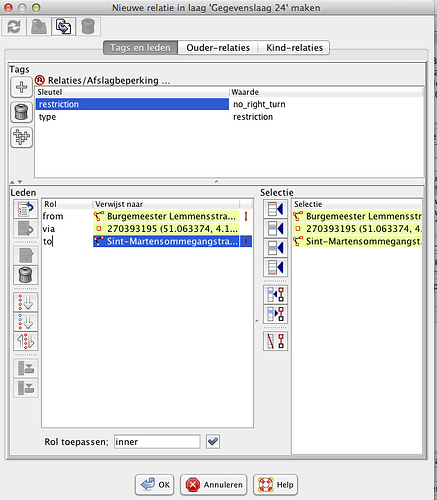Exactly. Just collecting together separate elements.
I like your term “construction nodes”, it shows understanding that the geometry of lines has to be defined somehow after all, and that is by giving some positions (latitude/longitude) where it passes along. Those positions are called nodes and get an id-number.
Uh, no. A way made up of nodes is still just a way, not a relation. Because ALL of the nodes listed in a way are its construction nodes, regardless if some of them may carry additional tags (traffic lights, bus stop, etc.) A way must pass over ALL its nodes, otherwise they would simply not be contained in this way’s definition.
That doesn’t mean that construction nodes could not at the same time also be bus stops etc. It’s not either-or, instead just multiple functions for such a node.
Just to clarify, that also doesn’t mean that it wouldn’t be possible to list both, the way and one of its special nodes together in a relation too. It just means, if you want a relation, it must be created manually, like everything else too. Relations also allow to collect together ways and nodes that are not connected in the same position, like, let’s say, info boards a few steps sideways of some hiking trail.
If they are contained in the definition of a way, they are its construction nodes.
If additionally they may be contained in some relation, that can be seen e.g. at the bottom of their page at osm.org. Just look at hadw’s nice example page again:
http://www.openstreetmap.org/way/71799578
Editors show it too, somehow somewhere, each one has its own methods.
Of course, if you add nodes as single elements to a relation, they must represent something of their own. That means they should have some meaningful tag like bus stop.
Uh oh, just remembered:
If you use the iD-editor, that one seems not intended to handle relations! Perhaps better not touch them with it…
